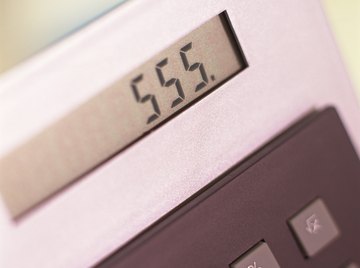
Children begin to practice and solve mathematical word problems in elementary school. Learning how to do word problems teaches your child to apply math to solve problems in everyday life. But many students, even at college level, are intimidated by simple word problems. The trick is to pull the right numbers out of the problem and use the written clues to set up a mathematical equation.
Teach your child to interpret the word problem. For example, consider the problem, "Joe has two apples. Bob has three. Together, how many apples do they have?" The word "together" suggests you're combining objects, so the operation is addition. Because most people are visual learners, you can also use props to illustrate the problem. Use stones, beans, coins or real apples to demonstrate quantities to your child.
Get the child to memorize math definitions. Math has a vocabulary of its own. When your child encounters terms such as "sum," "difference" and "quotient," ask him to circle those terms and make sure he knows which functions are required to solve the problem. Also, teach him common synonyms for math terms. For example, if you see the word "yield" in a word problem, that translates into an equal sign. And "total of" or "increased by" suggests addition.
Ask the child questions to get him to understand what the problem is asking for. Restate the problem in different ways, as many times as needed, until your child understands what the problem is asking. Ask your child to underline the portion of the word problem that asks a question and, if necessary, have her rewrite the question in her own words.
Teach your child to differentiate between critical and superfluous information. For example, consider this problem: "Jim is 7 years old. Robin is 2 years older than Jim. Sam is 2 years younger than Jim. How old is Robin?" There are three numbers in this problem, one of which is not needed. Ask your child to cross out information that is not necessary to solve the problem. This will help to minimize confusion. In the example, the question is about Robin's age, so the information about Sam is superfluous.
Determine which arithmetic function is needed to solve the problem. In the previous problem, if Jim is 7 years old and Robin is 2 years older, you would be adding 2 years to 7 years. The word "older" suggests a greater number, so the operation is addition. You would write, "2 + 7 = 9."
References
About the Author
This article was written by the CareerTrend team, copy edited and fact checked through a multi-point auditing system, in efforts to ensure our readers only receive the best information. To submit your questions or ideas, or to simply learn more about CareerTrend, contact us [here](http://careertrend.com/about-us).
Photo Credits
Creatas/Creatas/Getty Images
